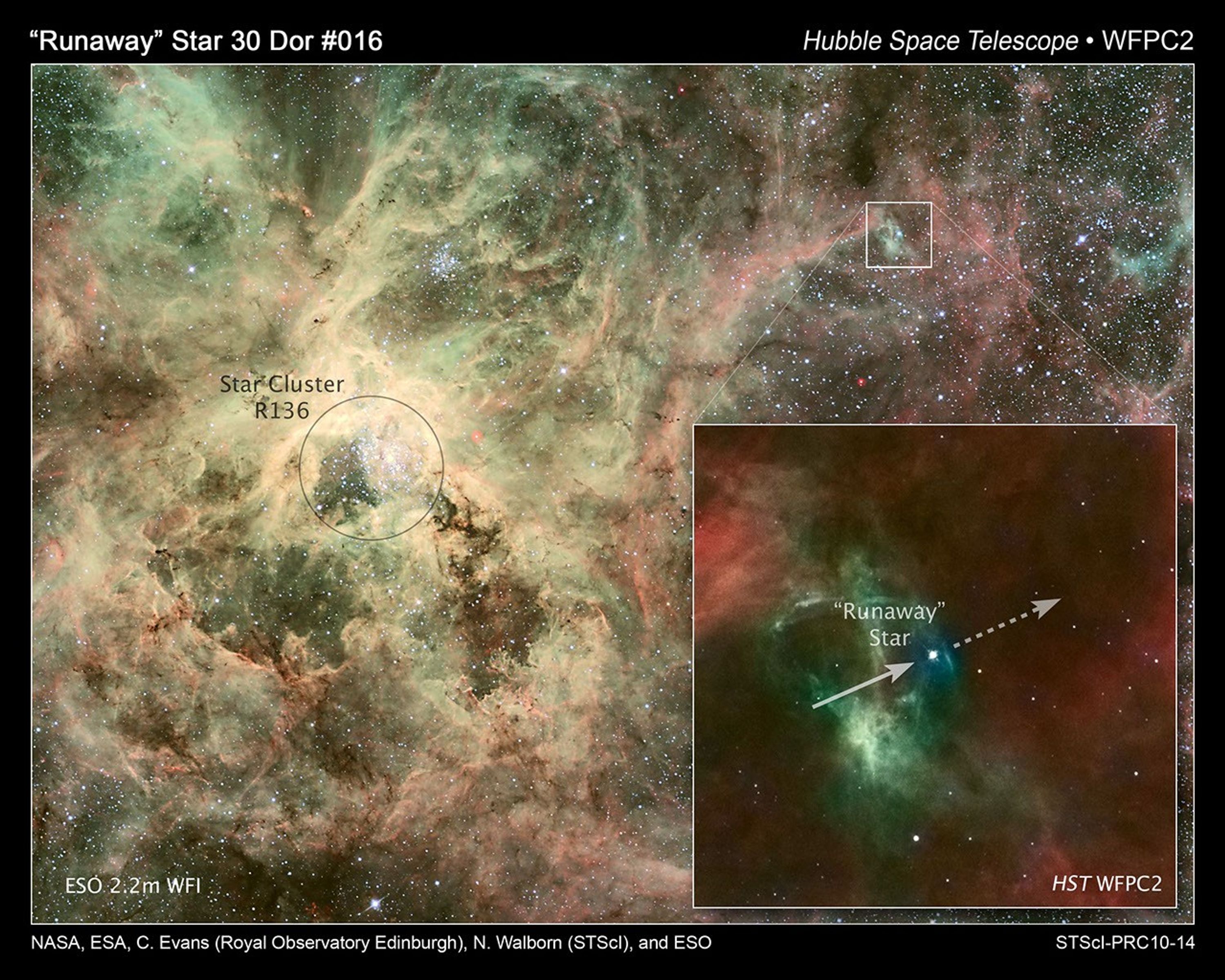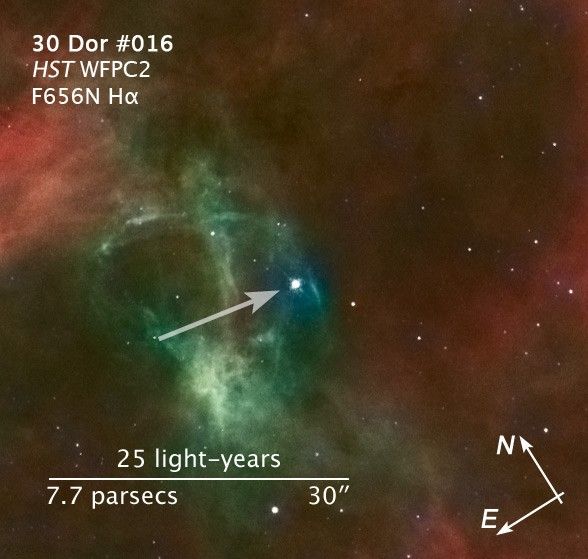1 min read
ESO 2.2-m WFI Image of the Tarantula Nebula

About the Object
- R.A. PositionR.A. PositionRight ascension – analogous to longitude – is one component of an object's position.05h 37m 8.87s
- Dec. PositionDec. PositionDeclination – analogous to latitude – is one component of an object's position.-69° 7' 20.35"
- ConstellationConstellationOne of 88 recognized regions of the celestial sphere in which the object appears.Dorado
- DistanceDistanceThe physical distance from Earth to the astronomical object. Distances within our solar system are usually measured in Astronomical Units (AU). Distances between stars are usually measured in light-years. Interstellar distances can also be measured in parsecs.170,000 light-years (52,000 parsecs)
About the Data
- InstrumentInstrumentThe science instrument used to produce the data.ESO 2.2-m WFI
- Object NameObject NameA name or catalog number that astronomers use to identify an astronomical object.Tarantula Nebula, 30 Doradus
- Object DescriptionObject DescriptionThe type of astronomical object.H II Region in the Large Magellanic Cloud
- Release DateMay 11, 2010
- Science ReleaseHubble Catches Heavyweight Runaway Star Speeding from 30 Doradus
- CreditESO, J. Alves (Calar Alto, Spain), and B. Vandame and Y. Beletski (ESO); Acknowledgment: Processing by B. Fosbury (ST-ECF)
Related Images & Videos

Astronomers Nab Runaway Star
This image of the 30 Doradus nebula, a rambunctious stellar nursery, and the enlarged inset photo show a heavyweight star that may have been kicked out of its home by a pair of heftier siblings. In the inset image at right, an arrow points to the stellar runaway and a dashed...

Hubble Observations of Massive Stars in the Large Magellanic Cloud
This is the Hubble Space Telescope Cosmic Origins Spectrograph (COS) observation of 30 Dor #016 compared with one by the Hubble Space Telescope Imaging Spectrograph (STIS) of the similar star HDE 269810, also in the Large Magellanic Cloud. The stellar-wind features of helium,...
Share
Details
Last Updated
Aug 17, 2025
Contact
Media
Claire Andreoli
NASA’s Goddard Space Flight Center
Greenbelt, Maryland
claire.andreoli@nasa.gov































